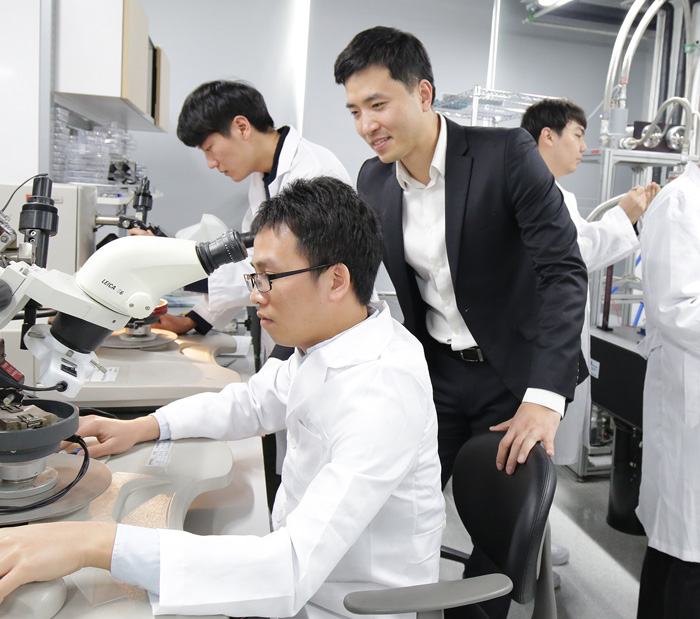Research Stories
Creation of Two-Terminal Tunneling Random Access Memory (TRAM) Inspired by Brain Neurons
A new memory device inspired by the neuron connections of the human brain has been designed.
Electronic and Electrical Engineering
Prof.
YU, WOOJONG
A new memory device inspired by the neuron connections of the human brain has been designed. The research, published in Advanced Materials as a back cover paper, highlights the device's highly reliable performance, long retention time, and endurance. Moreover, its flexibility makes it a promising tool for the next-generation soft electronics attached to clothes or the body. The brain is able to learn and memorize thanks to a huge number of connections between neurons. The information humans memorize is transmitted through synapses from one neuron to the next as an electro-chemical signal. Inspired by these connections, scientists constructed a memory called two-terminal tunneling random access memory (TRAM), where two electrodes referred to as 'drain' and 'source' resemble the two communicating neurons of the synapse.
TRAM is made up of a stack of one-atom-thick or a few-atoms-thick 2D crystal layers: the semiconductor molybdenum disulfide (drain and source), a tunneling insulator of aluminum oxide (Al2O3), and a floating gate of graphene layer. The researchers secured a large-area memory integration technology using a large-area grown graphene and a two-dimensional semiconductor through chemical vapor deposition (CVD). In simple terms, memory creates program (logical-0) and erase (logical-1) states by charging and discharging the graphene floating gate through the h-BN tunneling barrier. By effective charge tunneling through the crystalline h-BN layer and storing charges in the graphene layer, TRAM demonstrates an ultimately low off-state current of 10-14 A, leading to ultra high off/on ratio over 109 about 103 times higher than other two-terminal memories. Furthermore, the absence of thick, rigid blocking oxides enables high flexibility, which is useful for soft electronics. Our memory device can be useful for next-generation neuromorphic systems and wearable, body-attachable electronics in the near future.

